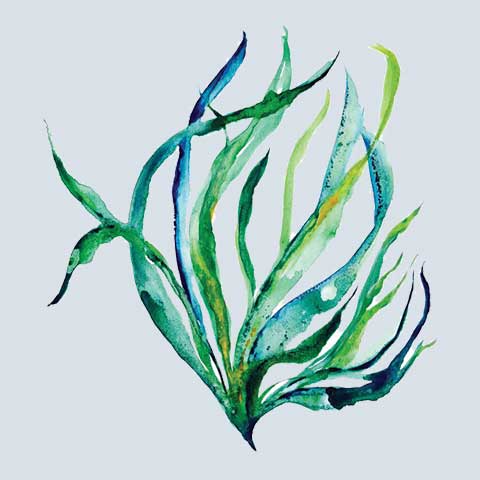Seaweed continues to be a promising industry in coastal communities along the U.S. East and West coasts. Globally, the industry is valued at $12 billion, but commercial growth could be boosted by improved processing infrastructure and expanded markets.
While 95 percent of edible seaweed products in the United States are imported, there is a wild and growing cultivated harvest in the Northeast. A March 2020 study published by the Island Institute, titled “Edible Seaweed Market Analysis,” looked at growth potential in Maine’s edible seaweed markets over the next 15 years. The report found that production in Maine will grow about 12 to 15 percent annually over the next decade and is expected to more than double seaweed production by 2025.
Sugar kelp and alaria aquaculture are low-barrier and relatively affordable. They provide value-added opportunities for commercial fishermen and local economies, particularly where wild fisheries have declined. Maine Department of Maine Resources data on farm raised seaweed indicates that in 2018, 53,564 wet pounds valued at $37,897 were landed. In 2019, 280,612 wet pounds valued at $176,132 were landed.
Atlantic Sea Farms, a large commercial seaweed farm in Maine with 24 partner farmers, grew 30,000 pounds of seaweed in 2018. This year, the company planted enough for 800,000 pounds. The crop Atlantic Sea Farms cultivates ends up in products including fresh and frozen seaweed in pureed cubes and ready-to-eat and fermented products.
While 2020 data for seaweed aquaculture in Maine has not yet been released, Atlantic CEO Brianna Warner says 2020 saw more growth “and we expect that to continue to grow exponentially for many years to come. And it will soon be a large portion of the seaweed harvest value in Maine.”
One aspect of seaweed aquaculture that appeals to coastal communities is the benefits it brings to oceans and the environment.
“Seaweed aquaculture is regenerative aquaculture — growing seaweed doesn't require any inputs (no arable land, no fresh water, no pesticides or antibiotics), helps improve our oceans, and removes carbon and nitrogen from the water column, which reduces ocean acidification locally,” adds Warner.
Because it often takes place in the lobster off-season and uses much of the same equipment needed for lobstering, seaweed aquaculture can provide supplemental income for fishermen looking to diversify. Just like all fisheries, the covid-19 pandemic has caused the industry to recalibrate.
“Based on the number of farms that are seeding this year, we expect moderate growth. Like all seafood, covid-19 did have an initial impact on the market for seaweed products,” says Sebastian Belle, executive director of the Maine Aquaculture Association. “After that initial impact, markets appear to have recovered somewhat. This is in part due to the product forms that seaweed often takes, which are shelf-stable and lend themselves to retail sales.”
Brianna Warner says that before the pandemic, 80 percent of Atlantic Sea Farms’ business was in foodservice, such as restaurants and fast casual chains.
“This summer, we pivoted pretty significantly to a strategy focused on getting our products in retail outlets throughout the country — and so far, we have been very fortunate to have a product, and a story, that grocery stores and consumers are really excited about.”







